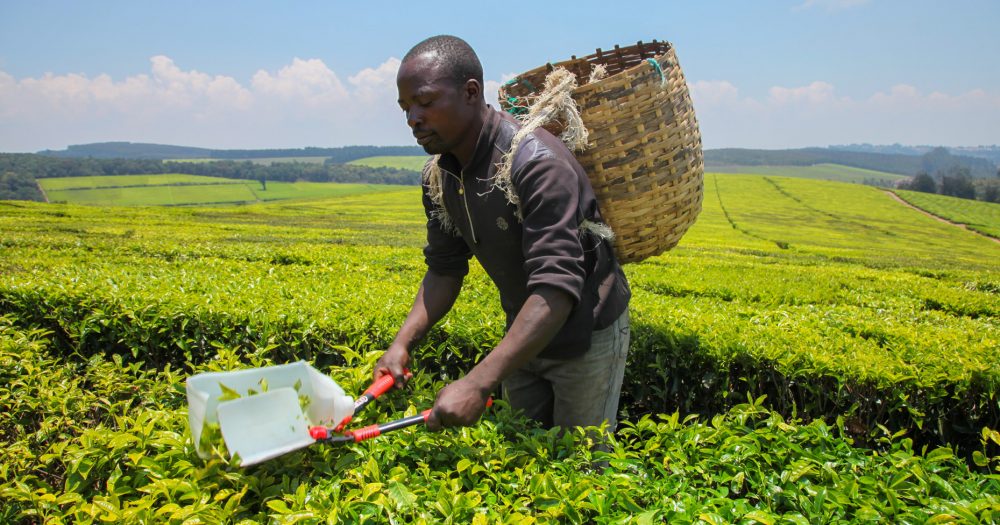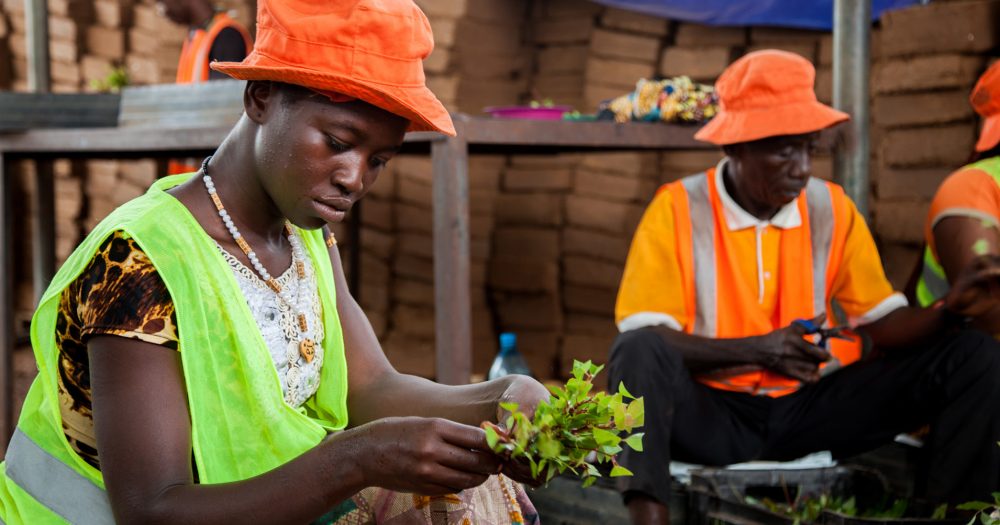This investment was made when British International Investment was named CDC Group.
We have now exited this investment. This is what we achieved.
Achieved impact
The project unsuccessful in generating the expected development impact. Despite initial goals to reach 400,000 smallholder farmers through the PAH model over three years, only approx. 90,000 farmers were reached during a period of two years. Any impact achieved is attributed to the portion of the committed capital that was drawn down (approx. 20% of initial commitment).
The PAH was an innovative model aimed to boost agricultural insurance uptake among smallholder farmers, a crucial factor for proving commercial viability of this market segment. The project failed to meet key premium recovery milestones established at the time of the investment. The project’s unfavourable outcome is attributed to uncertainties in market receptiveness, including farmer uptake and participation from supply chain actors and private investors. While smallholder farmers recognized the value of insurance, low uptake and timely repayment rates are due to a still evolving market.
PAH Pilot 2.0, a scale up of an earlier proof of concept (Pilot 1.0) funded by other development partners, was discontinued early in January 2024, after two years and having only been partially disbursed (30% of committed capital).
This was due to significant challenges and ultimately underperformance in the form of low repayment (~9%) of the pre-financed premiums. This termination was agreed between Pula and BII based on a mutual acknowledgement of the challenges experienced.
Expected impact
BII partnered with Pula AG to pilot a nascent pay-at-harvest (PAH) insurance model for farmers. The Pula investment was structured as a £5m recoverable grant to support the scale up of a pilot for a new model of smallholder farmer insurance. PAH is virtually untested in Africa, but has the potential to significantly increase smallholder uptake of agricultural insurance through addressing key cyclical affordability barriers.
Impact information
Applies to investments made from 2019 onwards. The tabs in this section define what we expect to achieve through the investment, assessing the potential impact of the investment against six dimensions of impact. You can find more details on our methodology of assessing impact here.
Applies to investments made from 2019 onwards. The tabs in this section define what we expect to achieve through the investment, assessing the potential impact of the investment against six dimensions of impact. You can find more details on our methodology of assessing impact here.
What?
| Impact |
|---|
|
|
|
How?
| Primary | Secondary |
|---|---|
Signposts for success will include in the short-term increased uptake from smallholder farmers and repayment rates of over 90 per cent. In the medium term, it will include full recovery and replacement of BII by private investors as pre-financers of the insurance premium. In the long term, it will include the scale up of the model by Pula and its replication by competitors. |
|
Who?
| Stakeholder | Geography | Characteristics |
|---|---|---|
| Consumer (farmers) |
Pan-Africa, with the pilot focused on Ghana, Nigeria, and Kenya. Tanzania, Uganda, and Mozambique may follow in a subsequent phase of the pilot. |
Smallholder farmers with landholding varying from one to two hectares in East Africa to more than two hectares in larger West African markets but lower productivity per hectare. Primarily living under $5.50 per day. Over 30 per cent women with up to 50 per cent lead farmers in some markets. High vulnerability to climate hazard due to inadequate farming practices and limited adaptive capacity. |
How much?
| Scale | Depth/Duration |
|---|---|
Track-record: Pula has served 5.1 million smallholder farmers. |
|
Contribution/additionality
| Contribution/additionality |
|---|
|
Catalytic investment under our Climate Innovation Facility enabling Pula to test, improve, and prove the pay-at-harvest model's applicability and impact. |
Risk
Execution Risk
Execution Risk
Execution Risk
|
Environmental and social information
-
Environmental and social summary
A high-level description of the environmental and social aspects of the investment. This may include a summary of key environmental and social risks identified during environmental and social due diligence (ESDD); key elements of an environmental and social action plan (ESAP); or ways in which we plan to support the investee improve environmental and social standards, such as through their environmental and social management system (ESMS); as well as any other priority areas agreed with the investee.
-
Environmental and social risk
A risk category rating, which indicates the level of environmental and social risk associated with an investment. For an explanation of the categorisations used, see here. We consistently provide an environmental and social risk category for all investments screened from 2023 onwards.
Environmental and social summary
We partnered with our fund manager to co-invest in this company, including through shared environmental and social (E&S) due diligence proportionate to the company's scale. An E&S action plan included items related to labour and working conditions, and grievance management.
Reporting and Complaints Mechanism
The Reporting and Complaints Mechanism allows anyone outside BII to report alleged breaches of the business integrity or environmental and social provisions of BII’s Policy on Responsible Investing. This includes breaches made by BII, a BII investee, or a portfolio company of a fund in which BII has invested. The Reporting and Complaints Mechanism Rules are available here. Reports and complaints can be submitted by email to reportsandcomplaints@bii.co.uk or by mail. See more details on our Reporting and Complaints Mechanism here.
For any other general enquiries contact us at enquiries@bii.co.uk
-
Key facts
- Last updated
:
When the last quarterly update of the website database occurred.
- March 2025
- Project number
:
An identifier number shared by investments in the same project.
- D5461
- Status
:
The current status of the investment (green flag for active and red flag for exited).
- Exited
- Region
:
The geographical region where the country is located. We currently invest in Africa, South Asia, South East Asia and the Caribbean. In 2023, BII’s investment mandate was extended allowing it to invest in regional funds linked to Ukraine, with the majority of activity expected to begin post-war. Investments outside these regions were made prior to 2012 under previous investment mandates.
- Africa
- Country
:
The countries where the investment delivers impact. Where impact is delivered in multiple countries, this is indicated.
- Africa
- Sector
:
We prioritise those sectors that facilitate development and need our capital the most. Our priority sectors contribute towards many of the Sustainable Development Goals. They range from investing in the power infrastructure that will provide people with better access to electricity, to investing in financial institutions that direct capital to the individuals and businesses that need it the most.
- Financial services
- Sub sector
:
The sub-sector that the investment is made into; this provides a more granular level of detail than the ‘sector’ information
- Food Products
- Investment type :
- Debt
- Start date :
- December 2021
- End date :
- March 2024
- Amount :
- $5m
- Currency of investment :
- USD
- Domicile
:
The company or investment fund’s place of incorporation.
- Switzerland
We provide capital in the following ways: directly – through direct equity, direct debt, guarantees and other non-intermediated financial instruments; and indirectly – principally through investment funds.
For direct investments and fund investments, this is the date BII committed capital to the investments. This is typically the date on which legal agreements are signed by all parties.
For the portfolio companies of our fund investments, this is the date (either the month or the quarter) on which the fund committed capital to the portfolio company.
For direct equity investments, this is the date at which British International Investment exited the investment.
For debt investments, this is the date at which the final debt repayment was made.
For funds, this is the date at which the fund was terminated.
For underlying fund investments, this is the date at which the fund manager exited the investment.
The total amount committed, per financial instrument, per investment, on the date BII becomes subject to a binding legal obligation to provide funding or assume a contingent liability. This information is provided in US dollars.
For direct investments, this is the amount that BII has committed to the business or project. For fund investments, this is the amount BII has committed to the fund.
The currency in which the investment was made.
- Climate finance
:
Indicates whether the investment is climate finance qualified or partially climate finance qualified and the type of climate finance (adaptation, mitigation or both). We define climate finance using the multilateral development bank (MDB) and the International Development Finance Club (IDFC) Common Principles climate finance methodology. See Common Principles for Climate Mitigation Finance Tracking and Common Principles for Climate Change Adaptation Finance Tracking. We provide the climate finance qualification and type for commitments from 2020 onwards, which is when we launched our Climate Change Strategy.
- Fully qualified
- Climate finance type
:
Mitigation: Indicates investments which, by avoiding or reducing GHG emissions or increasing GHG sequestration, contributes substantially to the stabilisation of GHG concentrations in the atmosphere – at a level which prevents dangerous anthropogenic interference with the climate system consistent with the long-term temperature goal of the Paris Agreement
Adaptation: Indicates investments aimed at preventing or reducing the risks or vulnerabilities posed by climate change and increasing climate resilience. This includes both adapted activities and enabling activities to manage and reduce physical climate risks
Dual: Indicates investments directed towards activities contributing to both climate change mitigation and climate change adaptation and meeting the respective criteria for each category
The climate finance type of the investment is determined at time of commitment.
-
- Adaptation
- Last updated


